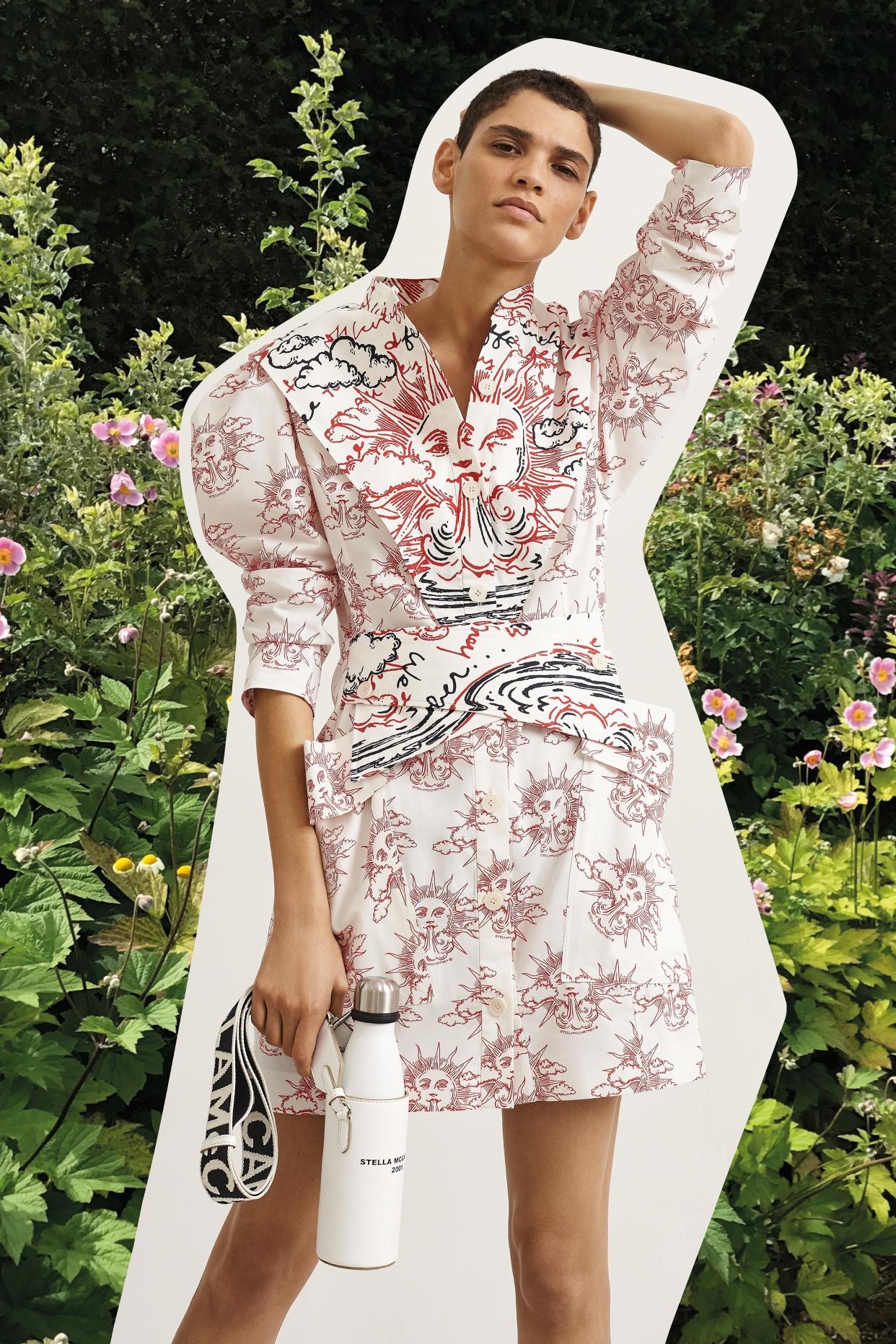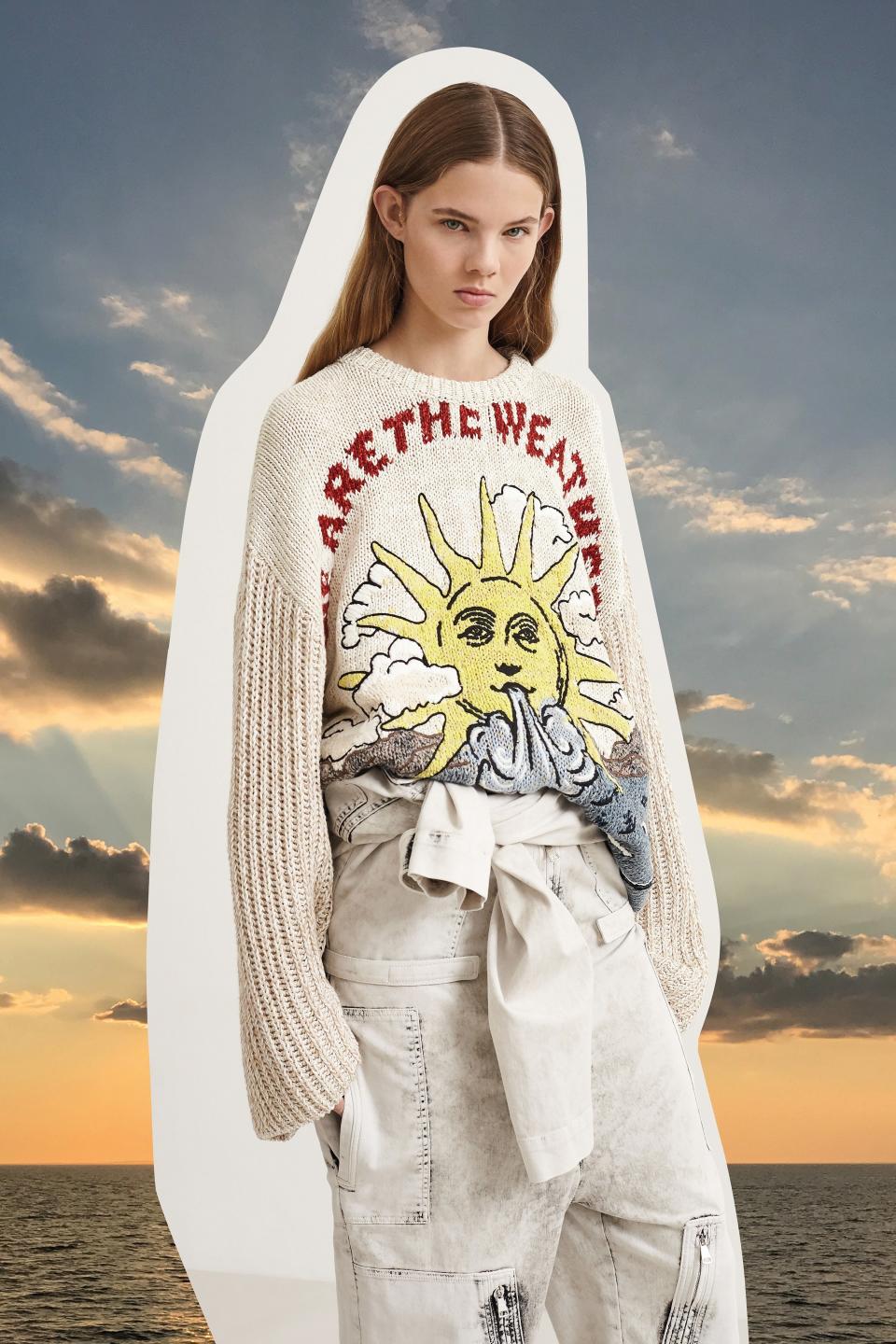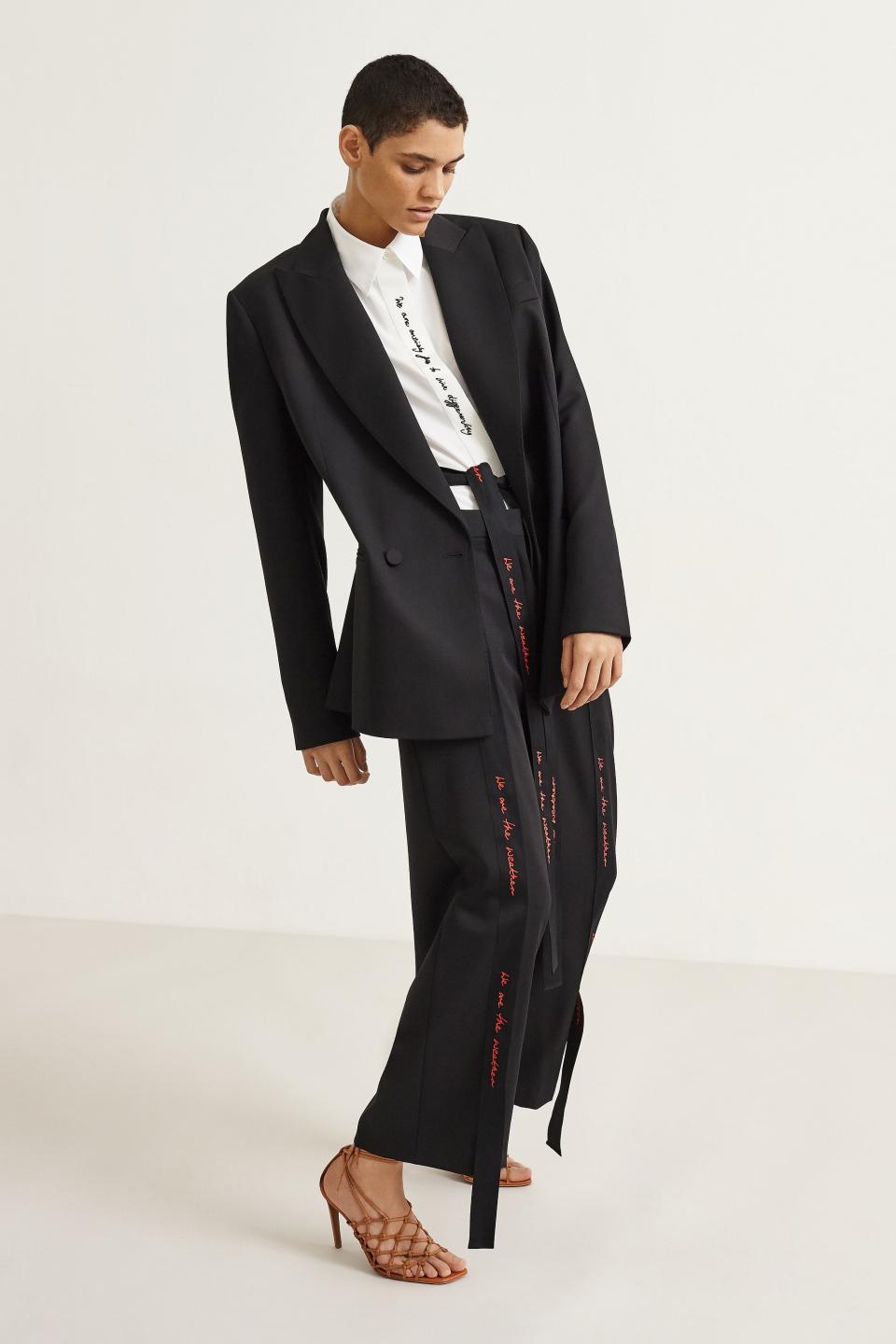On World Vegan Day, Stella McCartney and Jonathan Safran Foer Discuss How Our Food and Fashion Choices Impact Climate Change

If you haven’t bought Jonathan Safran Foer’s new book We Are the Weather, in which he argues that a plant-based diet is the key to solving climate change, today is the perfect excuse: It’s World Vegan Day. You could do one better and use some of your fall shopping budget to pick up a Stella McCartney puffer, jumpsuit, or sweater emblazoned with Foer’s handwriting: “we are entirely free to live differently”; “be leaving, believing, be living.”
The collaboration debuted for Resort 2020 and is available now exclusively at Saks Fifth Avenue. Earlier this week, Foer and McCartney sat down with Alina Cho at the store to discuss their project and shared philosophy about food, fashion, and how both are impacting climate change. The key takeaway was that despite the top-level changes that need to happen in our society and governments, it’s individual actions—what we eat, what we buy, and how we dispose of things—that can make an immediate difference.
“This book isn’t a thesis, and it’s not an argument I’m making, or a perspective I have—it’s just science,” Foer insisted. “It’s science that 97 percent of climate scientists agree on, and at this point, I think just about everyone agrees on it. What we know isn’t just that the planet is warming because of human activity, but we know [which] human activities matter significantly more than others. There are a lot of things we do [and] feel good about doing, like not using plastic straws and recycling. But those are nowhere near as important as the four high-impact activities [we can do to prevent global warming], which are flying less, living without a car, having fewer children, and eating a plant-based diet.”
Regarding the latter, in We Are the Weather, he writes that “saving the planet begins at breakfast,” and he makes the case for avoiding all animal products before dinnertime. (McCartney added, “or no animal products ever!”) The duo first met in 2009 when Foer sent McCartney a copy of his book Eating Animals, which shed light on the realities of factory farming and the ethics of meat. “Eating a plant-based diet is different from these other actions [to fix climate change], because it’s something everyone can act on right now,” he continued. “And there are scientific reasons why it’s the most urgent thing to act on.”

McCartney, a vegan herself, has spent the past 20 years insisting that changing our shopping habits are similarly urgent. The ways we consume food and fashion aren’t so different, and McCartney is outspoken about fashion’s massive contributions to climate change. She’s said time and time again that the fur and leather industries are the worst offender, and isn’t shy about disputing the party line that leather is “better” than faux alternatives because it’s “natural.” “The fur body has spun this story that fake fur is more harmful to the environment [than real fur], but that’s not the case. It’s actually 20 percent less harmful,” she said. “And [real leather] kills animals, which no one seems to want to talk about anymore.”
Those who have followed McCartney’s label are aware that avoiding fur and leather isn’t the only story anymore. She’s increasingly rigorous about the use of plastic and synthetics in her line: In 2010, she stopped using PVC, and in 2012, she developed a bio-based alternative to acetate (i.e., plastic) for her eyewear. She introduced recycled polyester (also derived from plastic) the same year, and in 2017 she formed an official partnership with Parley for the Oceans, using yarns made from recycled ocean plastic in her Adidas sneakers and activewear. (A few more facts even this super-fan didn’t know: McCartney stopped using brass hardware and accents in 2017 because of the negative impacts of copper mining, and instead uses stainless steel or aluminum, which is infinitely recyclable; in 2012, she introduced plant-based, biodegradable shoe soles; she only uses regenerated cashmere, which is made from post-factory waste in Italy and has a seven-times lower environmental impact than virgin cashmere; and she spent the past three years developing a sustainable viscose made in Sweden, which doesn’t contribute to deforestation the way traditional viscose does.)

Even if that minutiae doesn’t thrill you, it goes to show just how important it is to take a closer look at what we’re buying, what it’s made of, where it’s coming from, and who made it. Whether we’re well-versed in sustainability or not is no longer the point. “We’re in danger of being unfashionable if we don’t start to listen,” McCartney said. For those of us with fall shopping or holiday gifts on the brain, she makes it easy to feel good about purchasing her sun- and moon-embroidered jeans, which are made from organic and recycled cotton, and her relaxed tailoring, which is all made of sustainable materials like organic cotton or wool, recycled poly, and viscose. With other brands, you have to do a little more research—and it isn’t hard to find details that will turn you off, particularly when it comes to fast fashion.
“The world is waking up to the fact that fashion is one of the most harmful industries, and we need to take responsibility [as designers]. But you guys need to take responsibility too, and make sure you’re informed and consuming consciously. A truckload of fast fashion is incinerated or buried every second, and people wear those clothes up to three times. Most of it is thrown out with the tags on, though. The consumer actually makes the rules [with what you buy].”
Consider it all the more reason to browse the collaboration, or at least take a survey of your closet (and dinner plate!) and see where there’s room for improvement.
Originally Appeared on Vogue

